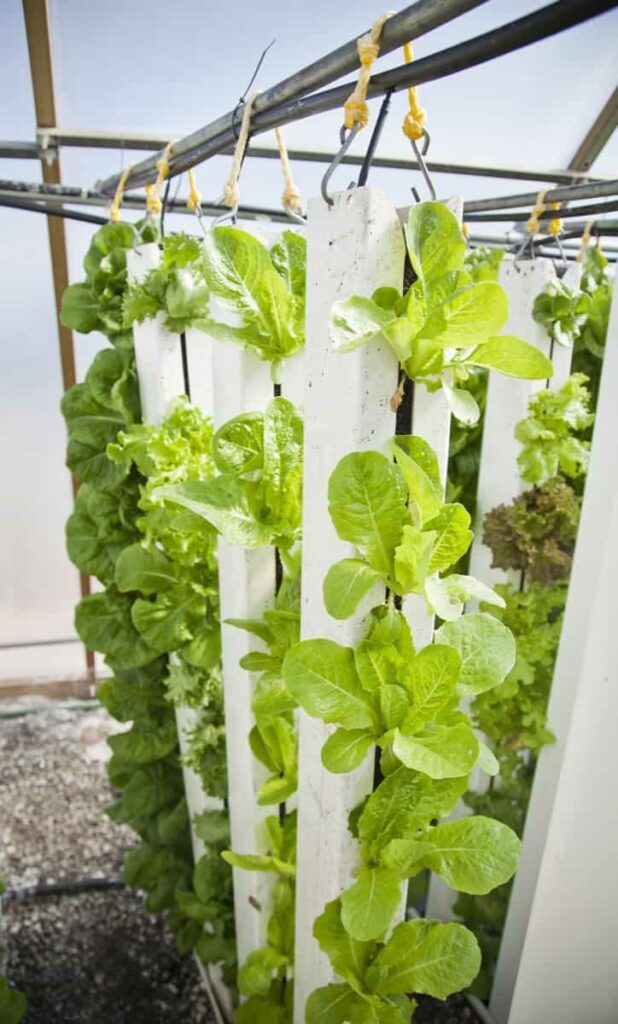The Indian government is pushing for the development of vertical farming in India as a way to increase crop production and food security. The vertical farming concept is not new, but it is still in its infancy in India. Several companies are already operational, and many more are waiting for government approval and subsidies. This blog post will explore India’s vertical farming business plan, including the crops grown, the subsidies available, the cost of setting up a farm, and the potential profits that can be made.
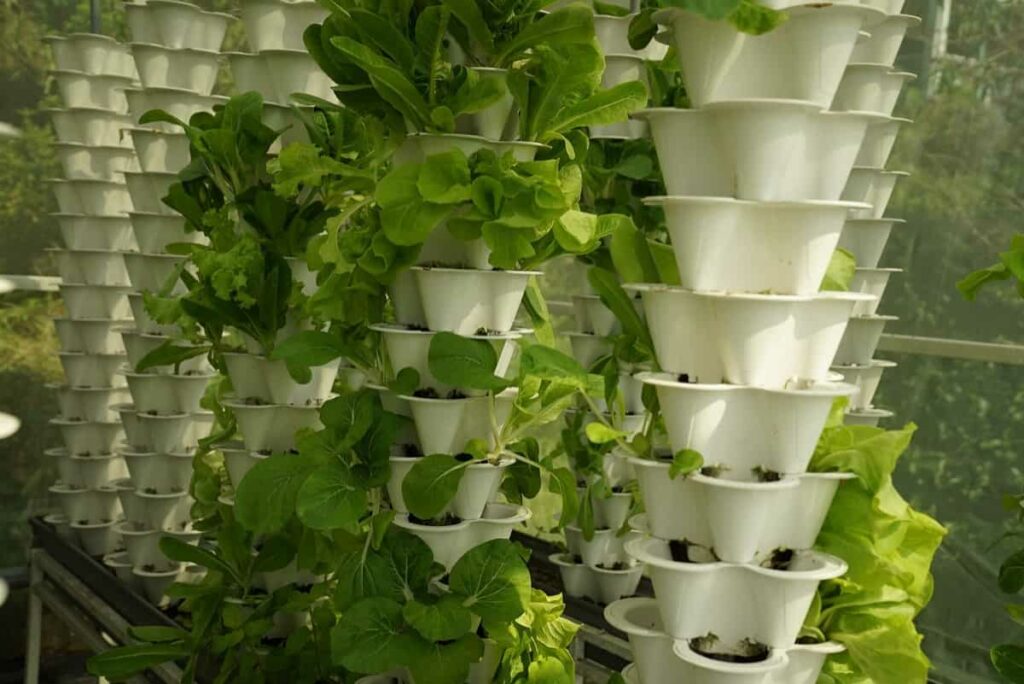
Vertical farming business plan in India
What is vertical farming?
Vertical farming is a type of farming method where plants are grown vertically stacked layers in a controlled environment. Vertical cultivation of crops is often used in urban areas where land is limited and can be done using hydroponics, aquaponics, or aeroponics. The vertical farming method has many benefits, requiring less water and land than traditional farming methods. It can also be done indoors, which protects crops from weather conditions and pests. Additionally, vertical farming can provide a year-round food supply.
In India, the government has supported vertical farming and offered subsidies to farmers who wish to implement this type of agriculture. Several companies offer vertical farming solutions, including equipment and training. India’s vertical farm setup cost will depend on the operation’s size and scale. However, it is generally more expensive than traditional farming methods. Nevertheless, the profits generated from vertical farms can be significant, especially when produce is sold at a premium price.
Benefits of vertical farming
The advantages of vertical farming are many and varied, but some of the most significant benefits include increased crop yields, reduced water usage, and minimized pesticide and herbicide use. Additionally, vertical farming can help combat soil erosion and degradation and provide a year-round supply of fresh produce. With traditional farming methods, growers are limited by the size of their land holdings and seasonal weather conditions.
In case you missed it: Vertical Hydroponic Farming: A Growing Trend In Urban Agriculture
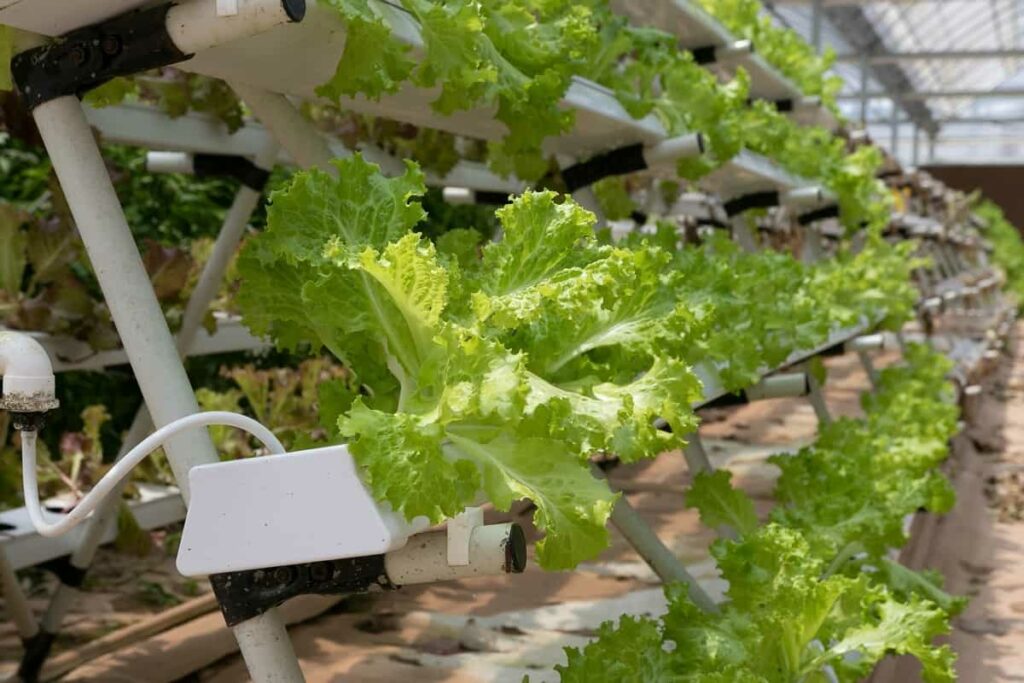
Vertical farming allows growers to increase their production capacity without needing more land, as crops are grown in vertically stacked layers in a controlled environment. This also eliminates the need for costly pesticides and herbicides, as pests and diseases are less likely to spread in a controlled environment. Water usage is another key advantage of vertical farming.
Traditional agriculture relies heavily on irrigation to water crops, leading to water shortages in areas where rainfall is scarce. Vertical farmers use significantly less water than traditional farmers, as hydroponic systems recycle water and efficiently use moisture from the air. Soil erosion is a major problem facing farmers worldwide, as topsoil is lost through wind and rain erosion.
This topsoil is essential for plant growth, so its loss can dramatically reduce crop yields. By growing crops in a controlled environment, vertical farmers can prevent soil erosion and degradation. Finally, vertical farmers can produce a year-round supply of fresh fruits and vegetables, even in climates where traditional agriculture is impossible. This provides communities with access to fresh produce.
Disadvantages of vertical farming
Limited to growing certain types of crops
While vertical farming can grow various crops, it is limited to crops grown in vertically stacked layers. This means that some crops, such as root vegetables, cannot be grown using this method.
High initial investment
Vertical farming requires a significant investment in money and time. The setup costs can be quite high, and this may take some time to get the farm up and running smoothly.
Requires specialized equipment
To set up a vertical farm, you need specialized equipment that can handle the conditions of the growing environment. This equipment can be expensive and may require regular maintenance.
It can be energy intensive
Vertical farms can be quite an energy intensive because it requires artificial lighting and climate control. This can make them expensive to operate and increase their carbon footprint.
Crops are grown in vertical farming
Vertical farming is an agricultural practice that involves growing crops in vertically stacked layers in a controlled environment. This type of farming allows for year-round production of crops, regardless of weather conditions, and can be done in a smaller footprint than traditional farming methods. Many crops can be grown in vertical farms, including leafy greens, herbs, and even some fruits and vegetables.
In case you missed it: Vertical Strawberry Farming: A New Way to Increase Your Income and Yield
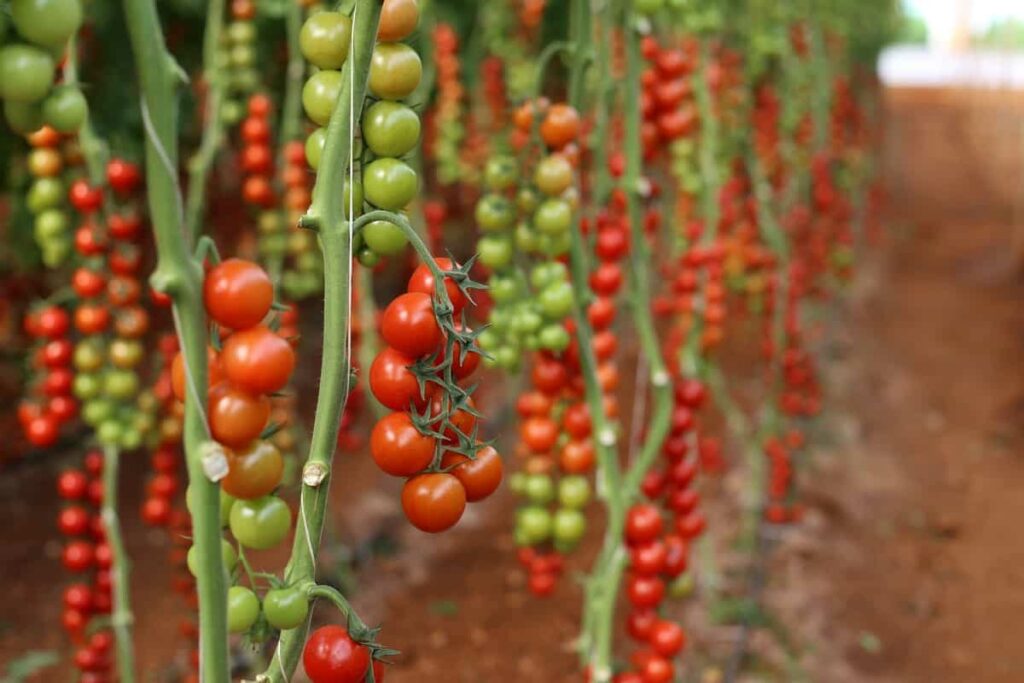
Leafy greens such as lettuce, spinach, and kale are some of vertical farms’ most commonly grown crops. These plants grow well in vertically stacked layers and require minimal space to produce a large quantity. Herbs such as basil, mint, and cilantro are also popular crops for vertical farming. These plants have a high yield per square foot and don’t require much water or fertilizer to thrive.
Fruits and vegetables such as tomatoes, peppers, and strawberries can also be grown on vertical farms, although they may require slightly more space than leafy greens or herbs. Overall, vertical farming is a great way to grow a large quantity of produce in a small space. In addition, vertical farming can be used to grow various crops year-round, regardless of weather conditions.
Costs of vertical farming in India
The cost of vertical farming is a hot topic in the agricultural industry. The main costs associated with vertical farming are the initial investment and operational and labor costs. The initial investment for starting a vertical farm can be pretty high. The equipment needed to grow crops in vertically stacked layers can be expensive. In addition, constructing a vertical farm facility can also be costly.
Operational costs for a vertical farm are typically higher than those for traditional farming methods. This is due to the need for special equipment and additional labor costs. For example, energy costs can be high due to using lights and pumps in a vertical farm. The labor cost is also often higher in a vertical farm than in a traditional farm. This is because vertical farms require more specialized skills and training. In addition, the working conditions in a vertical farm can be challenging, leading to higher employee turnover rates.
Subsidies available for vertical farming in India
The subsidies available for vertical farming in India are many and varied. The government offers several subsidies for farmers who wish to set up vertical farms, including a 50% subsidy on the cost of setting up the farm and subsidies on equipment and inputs. Several private companies offer subsidies for vertical farming, includingVertiFarms, which offers a 20% subsidy on the cost of setting up a farm.
In case you missed it: Vertical Saffron Farming: The Red Gold Revolution for Excellent Profits
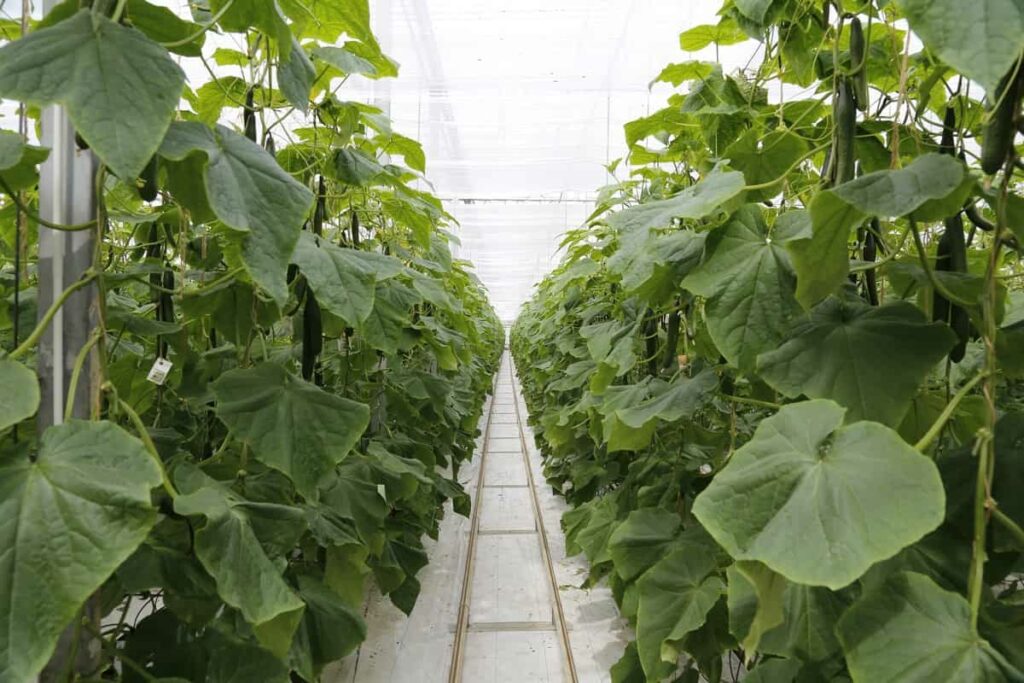
Companies involved in vertical farming in India
Some companies involved in vertical farming in India include Saraf Farms, AquaFarms, and GroVista. These companies are working to promote and establish vertical farming as a viable option for Indian farmers. They offer services and products that help farmers to set up and maintain their vertical farms. Saraf Farms is a company that provides consulting services for farmers interested in setting up vertical farms.
They also offer a range of products used in vertical farms, such as hydroponic systems, grow lights, and nutrients. AquaFarms is another company that offers similar services and products. In addition, they also operate their vertical farm in Bangalore, which serves as a demonstration farm for potential customers. Finally, GroVista is a social enterprise that works with small-scale farmers in India to help them set up and operate vertical farms. They provide training and support to farmers and access to markets for selling their produce.
Profitability of vertical farming in India
In India, land cost is increasing daily, which is a big challenge for the farmers. The government has also provided farmers subsidies to encourage them to do vertical farming. The cost of labor is also very high in India. However, the yield from vertical farming is much higher than the yield from traditional farming. The main crops grown in India are rice, wheat, and maize. These crops need a lot of water; vertical farming uses less water than traditional farming.
Moreover, the use of pesticides and herbicides is also reduced in vertical farming. This results in less pollution and better crop quality. The demand for organic food is also increasing day by day. Since vertical farming does not use synthetic chemicals, the produce from vertical farms is completely organic. This gives farmers an excellent opportunity to sell their products at a higher price. Many companies are already doing vertical farming in India. Some of these companies are:
| Sky Greens | Sky Greens |
| Sharp | Vertigro |
| Bangalore Aero Farms | Ocado |
| Philips | Toshiba |
Vertical farming with hydroponics
Vertical farming with hydroponics is a type of agriculture where plants are grown in vertically stacked layers in a controlled environment. The hydroponics method uses growing plants in water without soil. This type of farming uses less space and fewer resources than traditional farming methods. Hydroponics systems can be simple or complex. Simple systems use one or two types of media, such as gravel or perlite, to support the roots of plants.
In case you missed it: Vertical Tomato Farming: Modern Way of Getting More Yields in Less Space
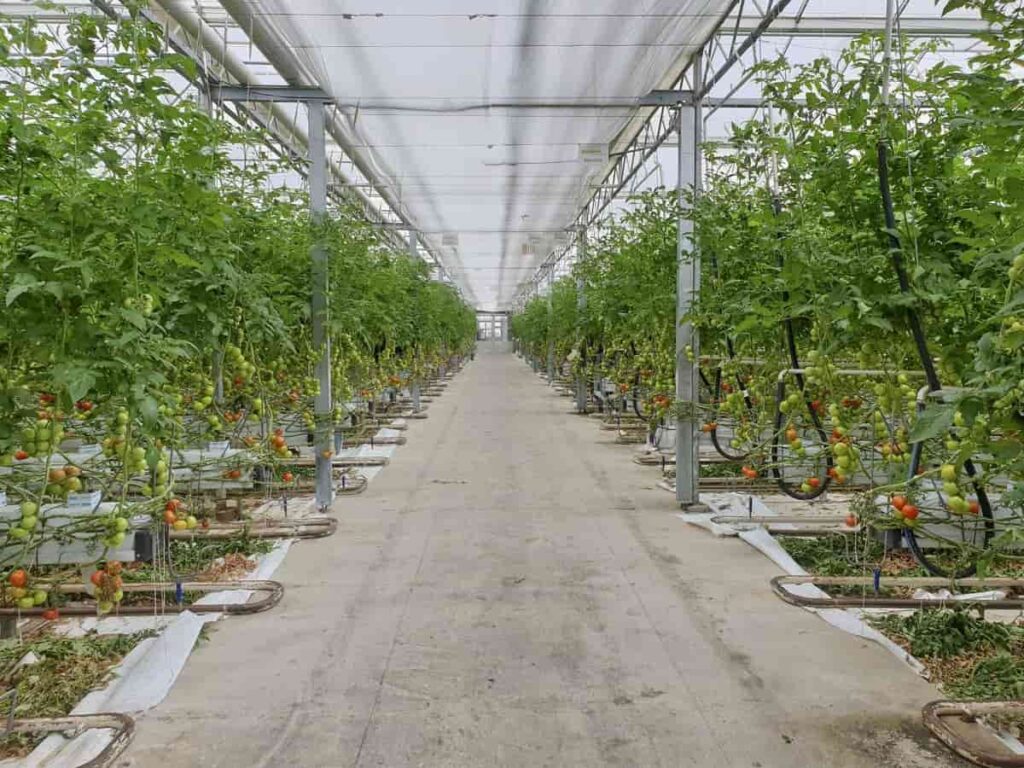
Complex systems use various media, such as coco coir, sand, clay pellets, and vermiculite, to support the roots of plants. Nutrients are added to the water to help the plants grow. The hydroponics system will depend on the type of plants you want to grow and the amount of space you have. Vertical farming with hydroponics is an excellent method to grow food indoors without using soil.
Vertical farming in Greenhouse
Vertical farming is a type of farming method where crops are grown vertically stacked layers in a controlled environment. Greenhouses are one type of controlled environment used for vertical farming. There are many benefits to vertical farming in Greenhouse, including the following:
- Increased efficiency: Vertical farming in the Greenhouse allows more efficient use of space, water, and other resources.
- Protected crops: A controlled greenhouse environment can protect crops from extreme weather conditions, pests, and diseases.
- Improved Quality: Crops grown in a controlled environment are often of higher quality due to the ideal growing conditions.
- Local production: Vertical farms can be located near urban areas, providing fresh produce to local consumers.
- Reduced transportation costs: Local production reduces transportation costs and emissions associated with long-distance shipping. A Greenhouse is an excellent option if you’re interested in starting a vertical farm. The benefits of vertical farming in a Greenhouse make it a highly efficient and sustainable way to produce fresh, high-quality food.
Soil-based vertical farming in India
Soil-based vertical farming in India is a type of agriculture where crops are grown in vertically stacked layers in a controlled environment. It is considered a more efficient and sustainable way of farming as it requires less land, water, and other resources. The Indian government has supported vertical farming and provided subsidies and tax breaks to encourage businesses to set up vertical farms.
Several companies are already operating vertical farms in India, such as HarvestPlus and Aravaipa Farms. However, vertical farming is still relatively new and expensive, so the profitability of vertical farms depends on several factors, such as the type of crop being grown, the scale of the operation, and the efficiency of the operation. Overall, it is estimated that vertical farming can be up to 50% more profitable than traditional farming methods.
In case you missed it: Top 29 Vertical Vegetable Garden Ideas for Beginners: Check How this Guide Helps Home Gardeners
Conclusion
Starting a vertical farming business in India can be profitable, especially if you choose suitable crops to grow and receive government subsidies. The cost of starting a vertical farm depends on the size and scale of your operation, but it is generally relatively low. Therefore, your vertical farming business can be highly successful with careful planning and execution. If you live in the following states of India and plan to start a vertical farming business, this article would be helpful.
| Andhra Pradesh | Karnataka |
| Arunachal Pradesh | Kerala |
| Assam | Madhya Pradesh |
| Bihar | Maharashtra |
| Chhattisgarh | Manipur |
| Goa | Meghalaya |
| Gujarat | Mizoram |
| Central India | South India |
| Haryana | Sikkim |
| Himachal Pradesh | Tamil Nadu |
| Jharkhand | Telangana |
| Nagaland | Tripura |
| Odisha | Uttar Pradesh |
| Punjab | Uttarakhand |
| Rajasthan | West Bengal |
| North India | West India |
- Irrigation and Water Management in Pineapple Farming
- Blossom to Harvest: Mastering Flowering and Pollination in Papaya Farming
- Pig Fattening Essentials: From Selection to Sale for Beginners
- Raising Wagyu Cattle: A Complete Guide for Premium Beef Production
- Soil Types and Their Water Holding Capacity
- Optimizing Irrigation Schedules for Coconut Groves for Enhanced Yield
- Espresso Your Garden: Coffee Grounds for Healthier Acid-Loving Plants
- The Best Soil Mix for Snake Plants: How to Mix Your Own Snake Plant Soil
- Green Thumb Success: Expert Tips for Cultivating Greenhouse Beans All Year Round
- Bloom All Year Round: The Ultimate Guide to Indoor Hyacinth Care
- Eco-Friendly Gardening: How to Make Liquid Fertilizer from Kitchen Waste
- Ultimate Guide to Grow Anise in Pots: Explore Seed Propagation to Harvesting
- Guide to Raising Chester White Pigs: Discover Breed Facts to Growth Management
- Mastering the Elegance: The Ultimate Guide to Weeping Cherry Tree Care, Planting, and Maintenance
- Ultimate Guide to Planting Garlic in Grow Bags: Growing Strategies for Beginners
- How to Fix Spider Plant Leaf-Related Problems: Natural and Organic Remedies
- 10 Reasons Why Your Tulsi Plant is Shedding Leaves: Home Remedies and Solutions
- Optimizing Growth and Yield: The Advantages of Palm Bunch Ash Fertilizer
- Utilizing Neem Oil Extract as a Natural Pesticide for Hydrangea
- From Soil to Harvest: Various Ways in Which Farmers Can Use AI Tools
- Steps to Encourage and Induce Citrus Flowers: A Comprehensive Guide
- How to Fix Snake Plant Leaf-Related Issues: Natural and Organic Remedies
- Transform Your Garden into a Fragrant Oasis with Raat Ki Rani (Night Blooming Jasmine)
- Discover the Ideal Chicken Breeds for Philippine Farms
- How to Create a Poultry Egg Farm Business Plan for Profits
- Grow Lemon Cucumbers Like a Pro: Insider Techniques for Bountiful Yields
- Ultimate Guide to Caring for Your Pink Princess Philodendron: Tips for Thriving Variegation
- Areca Nut Profit Per Acre: Calculating Yield and Cost of Cultivation
- How Kaveri Chicken is Becoming a More Profitable Breed in Indian Backyards
- Transform Your Barn: 9 Steps to Convert a Horse Stall into a Chicken Coop
- Exploring Suffolk Sheep Disadvantages with Limitations and Challenges
- Guide to Solving Potted Lemon Tree Problems: How to Revive Lemon Tree in Containers
- Steps to Encourage Female Pumpkin Flowers: Best Strategies for More Flowers and High Yields
- Ultimate Guide to Yellow Raspberries: Exploring from Planting to Care
- Ultimate Guide to Planting Ginger in Grow Bags: Growing Strategies for Beginners
- Ultimate Guide to Growing Red Creeping Thyme: Propagation, Planting, Pruning, and Care

